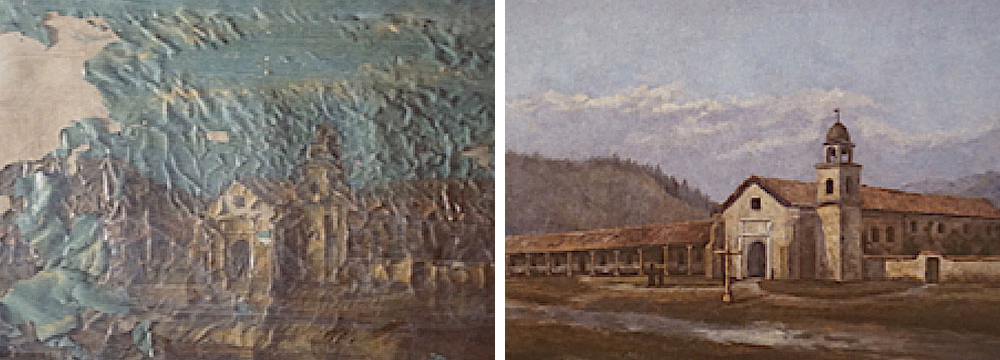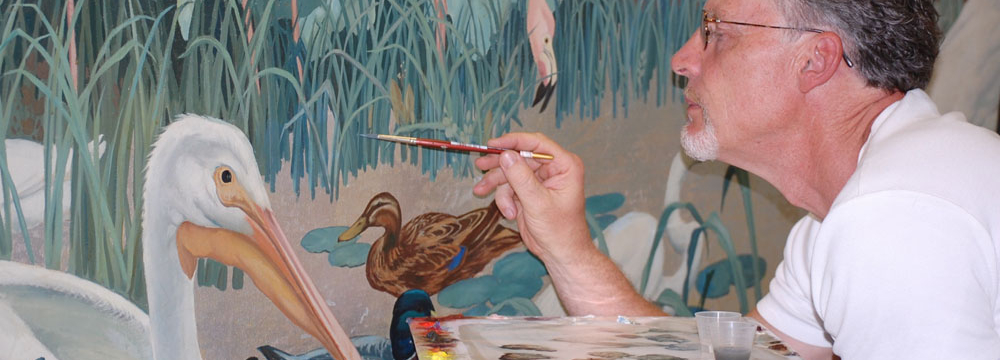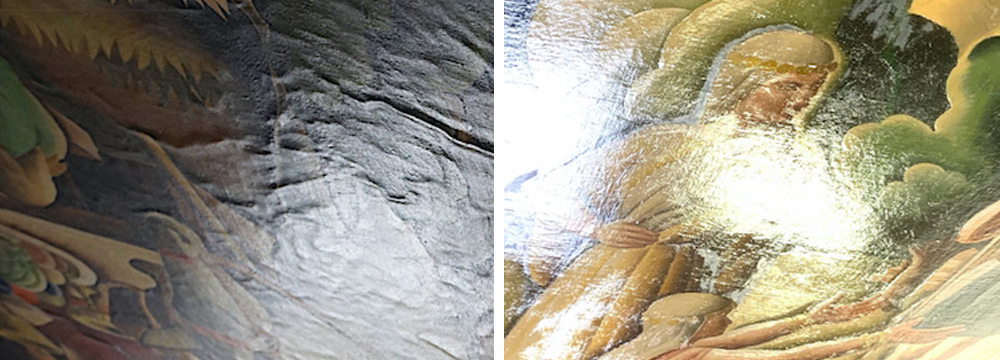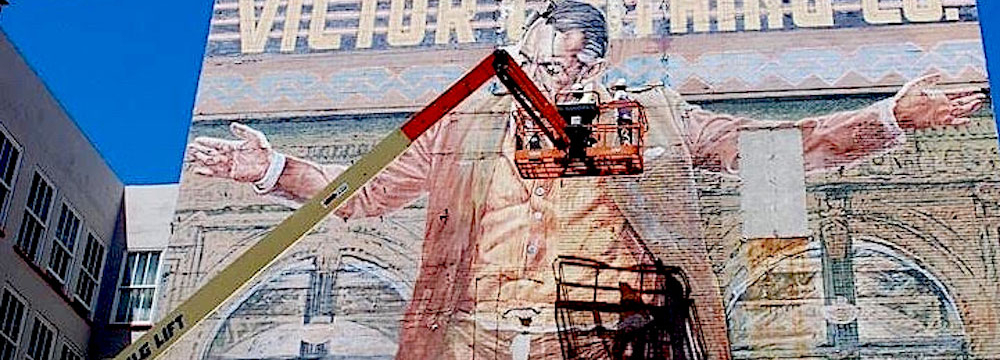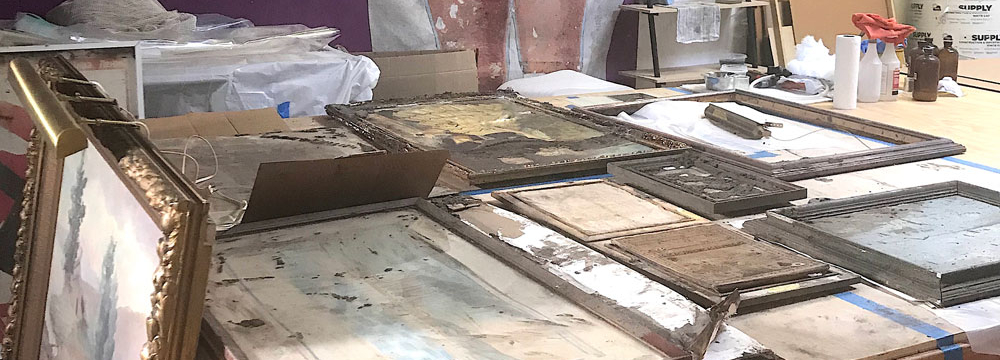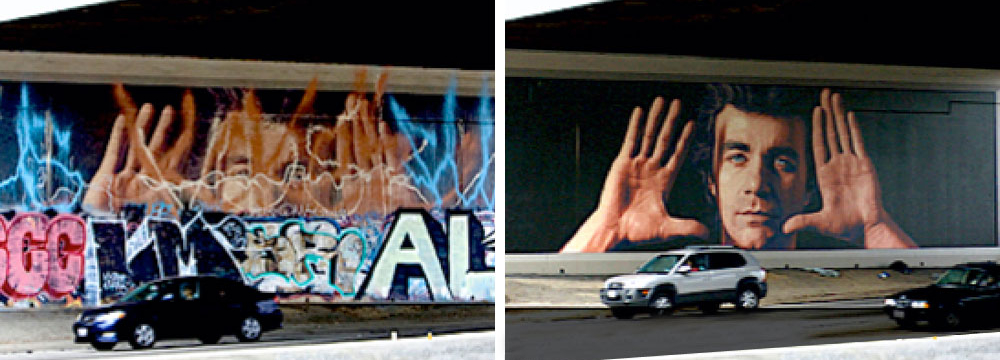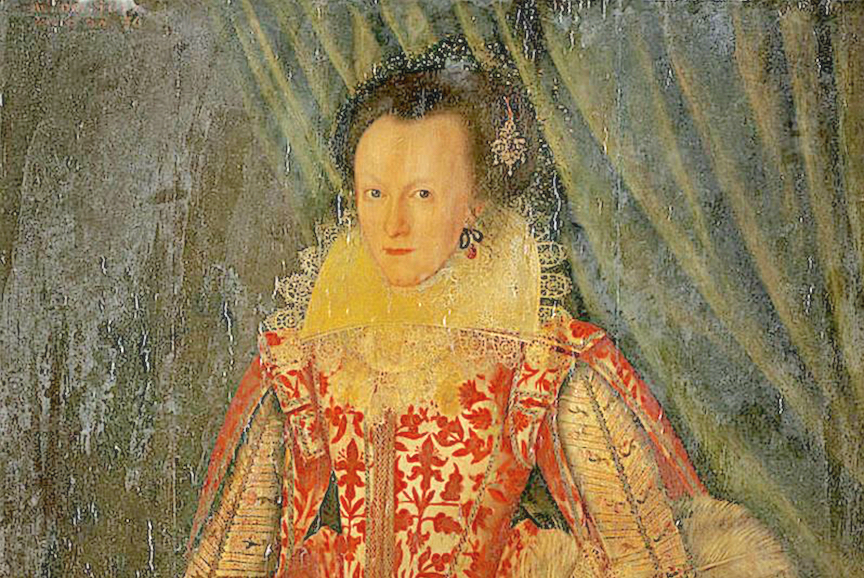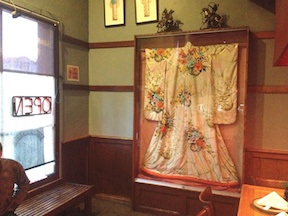
What used to be a gorgeous kimono, was now only a suggestion of what it used to be before its colors were blasted to smithereens by the light from the window.
Fading of art is something about which I get a lot of questions. Some of the types of items that I notice fade the fastest and of which there is the biggest change of color are:
- Many Asian cultural items like dyes in textiles
- Many Asian wood block prints/watercolors
- Watercolors in general, from any country, any time period
- Many “oriental” or middle eastern rugs
While oil paintings, in general, have minimal fading, there are some pigments that are inherently sensitive. Or sometimes, artists mixed techniques. For instance, the Golden Age English portrait painters at the turn of the 18th century often did lace and glazing on their oil paintings with tempera and watercolor (a nightmare for art conservators). Usually, on oil paintings, a final glazing layer may be more inclined to fade than thicker layers of color. Sometimes this is why you see portraits of people looking like death warmed over…. cause the rosy cheeks have faded.

Pens used for autographs (and signing certificates, diplomas etc), especially ball point pens, fade fast. Even my Art Conservation Director used a pen that faded quickly on my diploma!! Only permanent markers (which bleed through) and pencils seem to last.
Here are a few interesting facts about fading of vintage oil paintings that may surprise you:
- Ultraviolet (UV) rays are not the only part of light that causes fading. In fact you can block out all the UV (like with UV filtering framing glass) and still get a lot of fading because there is simply too much light…
- Fading is cumulative which means that if a sensitive work of art gets a low amount of light consistently for a long time, it will be like getting a lot of light in a short time.
- Fluorescent lights fade colors like crazy!!!
- Fading cannot be undone or restored. It is permanent damage. But it can sometimes be made to look much better.Call us if you would like to discuss: 805 564 3438 CA PST
Here’s something to think about.
Has your art really/actually faded?
Sometimes fading can be confused for the whitening of varnish or paint layers that can be caused by humidity and micro cracking (A breakdown in the varnish structure or the binder in the paint). For instance, a common problem is house maintenance personnel that wipe down the artwork and frame every once in awhile with a damp rag. Storage in high humidity situations can also result in the fogging up of the varnish or paint layers. Paintings over fireplaces that have exposure to heat and then get wiped down have this problem occur more often more rapidly. This haziness or fogging of the varnish and paint layer is sometimes called “blooming”… but this problem can usually be reversed or “restored.”
Another reason art can look faded, when it is not, is when it has a substantial layer of dust on it. This is especially true for outdoor monumental art. If your art is under glass, is your glass clean? People feel pretty dumb when they ask me to evaluate their art to discuss fading and actually, its only hazy glass. Of course, if you are buying “new” art from a sale, perhaps its been in a smoky environment or stored in dirty conditions and has a layer of dust and grime that dull the colors to look faded.
So, has your artwork faded?
Is there anything that can be done about it?
If you have questions about painting restoration/conservation give us a call to chat:
Scott M. Haskins, Virginia Panizzon – Art Conservators
805 564 3438 faclofficemanager@gmail.com
If you like the analytical side of art conservation, here is a really nice article about fading from an exhibition at the Met. I really liked the slide graphic for comparing the effect of fading. Nicely done. Enjoy!
#ScottMHaskins @ScottMHaskins @VirginiaPanizzon #VirginiaPanizzon #FineArtConservationLab #FadedArt #ArtConservation #ArtRestoration #PaintingRestoration #PaintingConservation #PublicArtMaintenance

